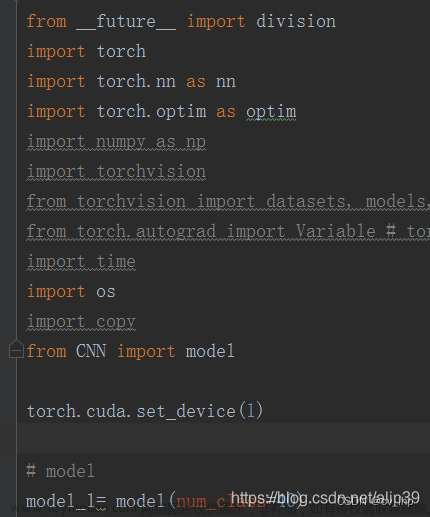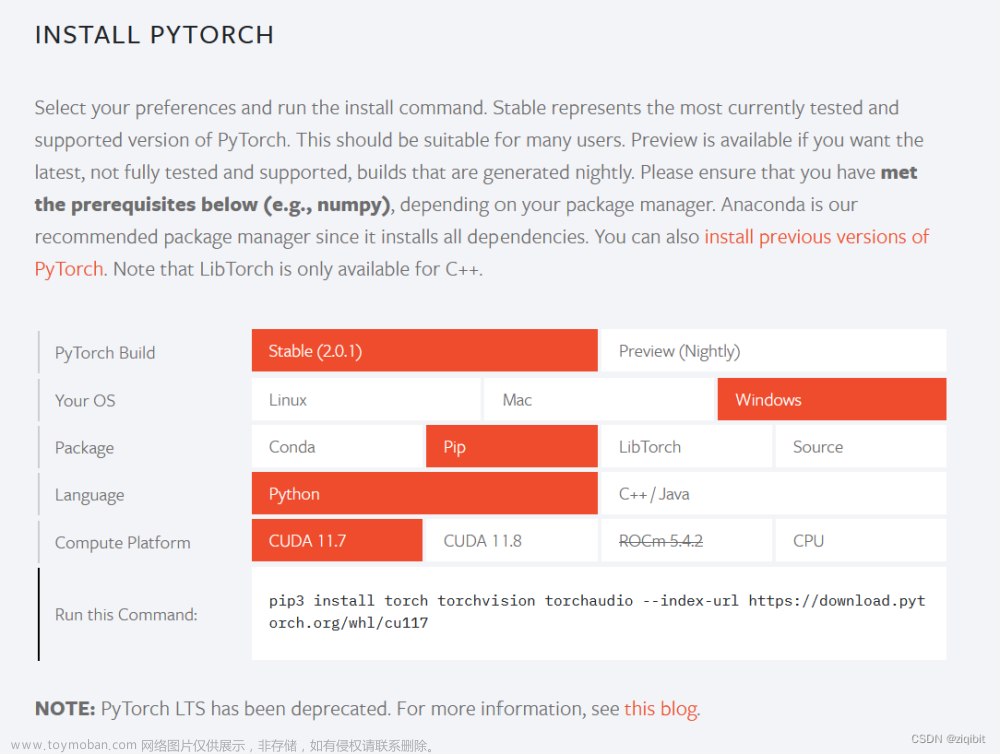1. 测量时间的方式
time.time()
time.perf_counter()
time.process_time()
time.time() 和time.perf_counter() 包括sleep()time 可以用作一般的时间测量,time.perf_counter()精度更高一些
time.process_time()当前进程的系统和用户CPU时间总和的值
测试代码:
def show_time():
print('我是time()方法:{}'.format(time.time()))
print('我是perf_counter()方法:{}'.format(time.perf_counter()))
print('我是process_time()方法:{}'.format(time.process_time()))
t0 = time.time()
c0 = time.perf_counter()
p0 = time.process_time()
r = 0
for i in range(10000000):
r += i
time.sleep(2)
print(r)
t1 = time.time()
c1 = time.perf_counter()
p1 = time.process_time()
spend1 = t1 - t0
spend2 = c1 - c0
spend3 = p1 - p0
print("time()方法用时:{}s".format(spend1))
print("perf_counter()用时:{}s".format(spend2))
print("process_time()用时:{}s".format(spend3))
print("测试完毕")
测试结果:
更详细解释参考
Python3.7中time模块的time()、perf_counter()和process_time()的区别
2. model.eval(), model.train(), torch.no_grad()方法介绍
2.1 model.train()和model.eval()
我们知道,在pytorch中,模型有两种模式可以设置,一个是train模式、另一个是eval模式。
model.train()的作用是启用 Batch Normalization 和 Dropout。在train模式,Dropout层会按照设定的参数p设置保留激活单元的概率,如keep_prob=0.8,Batch Normalization层会继续计算数据的mean和var并进行更新。
model.eval()的作用是不启用 Batch Normalization 和 Dropout。在eval模式下,Dropout层会让所有的激活单元都通过,而Batch Normalization层会停止计算和更新mean和var,直接使用在训练阶段已经学出的mean和var值。
在使用model.eval()时就是将模型切换到测试模式,在这里,模型就不会像在训练模式下一样去更新权重。但是需要注意的是model.eval()不会影响各层的梯度计算行为,即会和训练模式一样进行梯度计算和存储,只是不进行反向传播。
2.2 model.eval()和torch.no_grad()
在讲model.eval()时,其实还会提到torch.no_grad()。
torch.no_grad()用于停止autograd的计算,能起到加速和节省显存的作用,但是不会影响Dropout层和Batch Normalization层的行为。
如果不在意显存大小和计算时间的话,仅仅使用model.eval()已足够得到正确的validation的结果;而with torch.zero_grad()则是更进一步加速和节省gpu空间。因为不用计算和存储梯度,从而可以计算得更快,也可以使用更大的batch来运行模型。
3. 模型推理时间方式
在测量时间的时候,与一般测试不同,比如下面的代码不正确:
start = time.time()
result = model(input)
end = time.time()
而应该采用:
torch.cuda.synchronize()
start = time.time()
result = model(input)
torch.cuda.synchronize()
end = time.time()
因为在pytorch里面,程序的执行都是异步的。
如果采用代码1,测试的时间会很短,因为执行完end=time.time()程序就退出了,后台的cu也因为python的退出退出了。
如果采用代码2,代码会同步cu的操作,等待gpu上的操作都完成了再继续成形end = time.time()
4. 一个完整的测试模型推理时间的代码
一般是首先model.eval()不启用 Batch Normalization 和 Dropout, 不启用梯度更新
然后利用mode创建模型,和初始化输入数据(单张图像)
def measure_inference_speed(model, data, max_iter=200, log_interval=50):
model.eval()
# the first several iterations may be very slow so skip them
num_warmup = 5
pure_inf_time = 0
fps = 0
# benchmark with 2000 image and take the average
for i in range(max_iter):
torch.cuda.synchronize()
start_time = time.perf_counter()
with torch.no_grad():
model(*data)
torch.cuda.synchronize()
elapsed = time.perf_counter() - start_time
if i >= num_warmup:
pure_inf_time += elapsed
if (i + 1) % log_interval == 0:
fps = (i + 1 - num_warmup) / pure_inf_time
print(
f'Done image [{i + 1:<3}/ {max_iter}], '
f'fps: {fps:.1f} img / s, '
f'times per image: {1000 / fps:.1f} ms / img',
flush=True)
if (i + 1) == max_iter:
fps = (i + 1 - num_warmup) / pure_inf_time
print(
f'Overall fps: {fps:.1f} img / s, '
f'times per image: {1000 / fps:.1f} ms / img',
flush=True)
break
return fps
if __name__ == "__main__":
device = torch.device('cuda' if torch.cuda.is_available() else 'cpu')
# device = 'cpu'
print(device)
img_channel = 3
width = 32
enc_blks = [2, 2, 4, 8]
middle_blk_num = 12
dec_blks = [2, 2, 2, 2]
width = 16
enc_blks = [1, 1, 1]
middle_blk_num = 1
dec_blks = [1, 1, 1]
net = NAFNet(img_channel=img_channel, width=width, middle_blk_num=middle_blk_num,
enc_blk_nums=enc_blks, dec_blk_nums=dec_blks)
net = net.to(device)
data = [torch.rand(1, 3, 256, 256).to(device)]
fps = measure_inference_speed(net, data)
print('fps:', fps)
device = torch.device('cuda' if torch.cuda.is_available() else 'cpu')
# device = 'cpu'
print(device)
# sample 2
net = UNetSeeInDark()
net = net.to(device)
data = [torch.rand(1, 4, 400, 400).to(device)]
fps = measure_inference_speed(net, data)
print('fps:', fps)
# gpu : 32ms cpu: 350ms
summary(net, input_size=(1, 4, 400, 400), col_names=["kernel_size", "output_size", "num_params", "mult_adds"])
from ptflops import get_model_complexity_info
macs, params = get_model_complexity_info(net, (4, 400, 400), verbose=True, print_per_layer_stat=True)
print(macs, params)
 文章来源:https://www.toymoban.com/news/detail-462115.html
文章来源:https://www.toymoban.com/news/detail-462115.html
5. 参考:
https://blog.csdn.net/weixin_44317740/article/details/104651434
https://zhuanlan.zhihu.com/p/547033884
https://deci.ai/blog/measure-inference-time-deep-neural-networks/
https://github.com/xinntao/BasicSR文章来源地址https://www.toymoban.com/news/detail-462115.html
到了这里,关于pytorch 测量模型运行时间,GPU时间和CPU时间,model.eval()介绍的文章就介绍完了。如果您还想了解更多内容,请在右上角搜索TOY模板网以前的文章或继续浏览下面的相关文章,希望大家以后多多支持TOY模板网!











